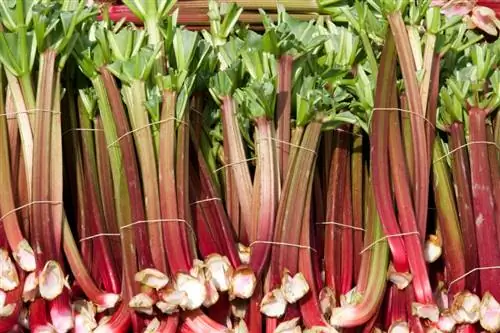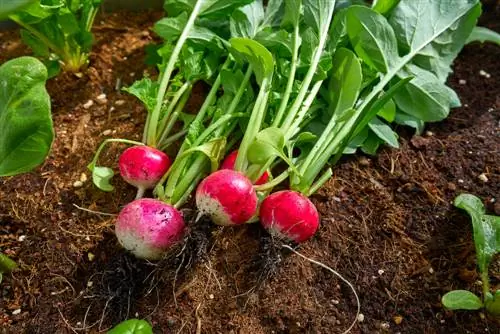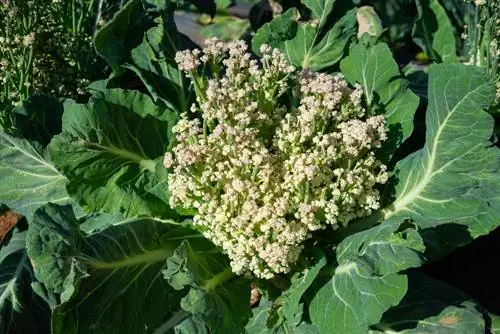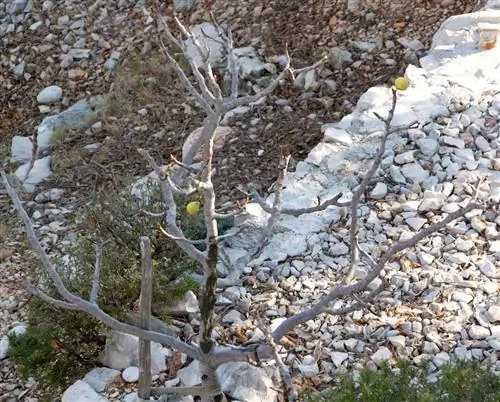- Author admin [email protected].
- Public 2023-12-16 16:46.
- Last modified 2025-01-23 11:22.
If the radish shoots up early and suddenly develops flowers, it is too late to harvest. The plants need optimal growing conditions. If the plant has been able to complete its development phase, speed is required.
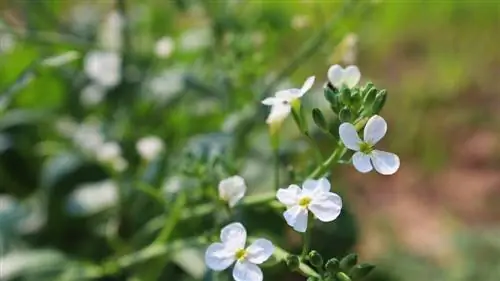
Why does the radish shoot up?
Radish shoots up and develops flowers when growing conditions are not optimal, for example due to over-fertilization, incorrect cultivation times or temperature fluctuations. Premature shooting affects the taste and texture of the radish root, making it inedible.
How radishes grow
Most cultivars grow as biennial vegetable plants, so that the inflorescence develops in the second year. If the plant forms an excessive number of leaves in the first growing season, root growth stagnates and the plant prepares for flower development while the roots do not gain any mass. This development cannot be stopped or reversed.
Causes of growth spurts
If premature bolting occurs, the environmental conditions are suboptimal. Even if the root vegetables no longer produce harvests, you should get to the bottom of the stress factors. This will prevent the error from repeating.
Too high nutrient supply
As a medium-eating radish, radish requires a balanced ratio of nutrients. Over-fertilization causes the vegetable plant to grow excessively and develop a lot of leaf mass. These suboptimal conditions often lead to premature bolting. It is sufficient if you improve the bed with compost four weeks before sowing. Alternatively, the plant is suitable as a catch or follow-up crop.
Wrong cultivation time
Spring and summer radishes are suitable for early to mid-early sowing from April to early August. If the sowing dates are between February and March, low temperatures of less than ten degrees can trigger premature flowering. The plants cannot tolerate night frosts.
You shouldn't wait too long before sowing in spring, as these varieties show a growth spurt when the weather is too warm. Summer varieties are somewhat more tolerant, although mild and not too hot weather proves to be beneficial. Autumn and winter radishes require late direct sowing.
Tip
Radish is one of the long-day plants that produce flowers when the day is at least twelve hours long. Planting under partially shaded conditions can have a small influence on growth.
Harvest radishes on time
Early varieties are ready to harvest after eight to ten weeks, while winter radish requires between 13 and 15 weeks to develop. The harvest window is very narrow in the summer months because the conditions encourage the plants to develop flowers easily.
Although strong taproots have developed at this time, they become inedible over time. They become woody and taste increasingly furry. There is often only a week between being ready for consumption and being overly ripe. With winter varieties you can take a little more time, as the plants will no longer grow due to falling temperatures.
Detecting harvest readiness
Spring varieties should ideally be harvested shortly before the recommended harvest time, even if the roots have not yet reached their optimal size by then. If the tissue does not give way when pressed between the thumb and index finger, it is ready for consumption.



